Douro Valley: Portugal’s Timeless Wine Region and Cultural Gem
Introducttion
Nestled in the northern heartlands of Portugal, the Douro Valley is a breathtaking mosaic of terraced vineyards, ancient villages, and serpentine rivers. A region where time seems to slow, it is renowned not only for its world-class wines but also for its historical depth and natural splendors. From its UNESCO World Heritage status to its rich gastronomy, the Douro Valley is a harmonious blend of tradition and modernity, offering a journey into a land where the past and present intertwine gracefully. Dive in, and let’s embark on a captivating exploration of this unparalleled gem.
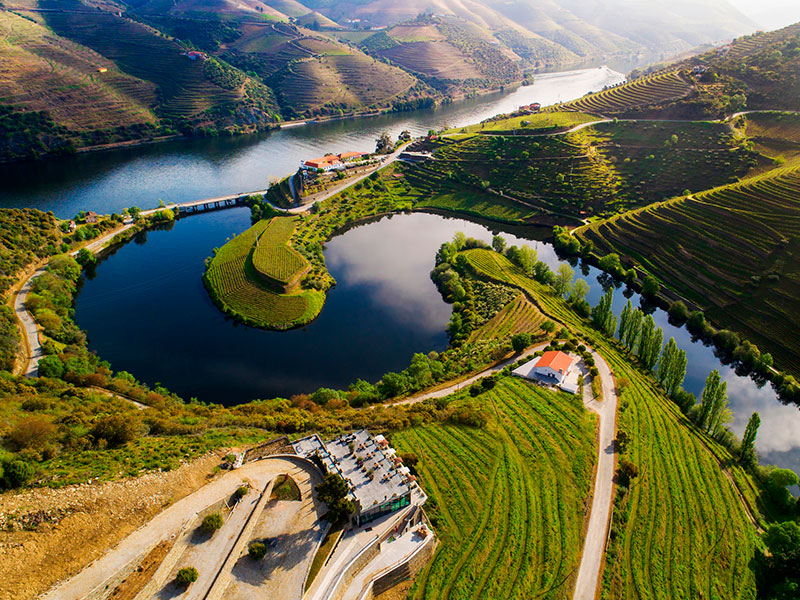
1. Historical Significance of the Douro Valley
The Douro Valley, often referred to as the enchanted valley, holds a deep-rooted history that has significantly impacted its modern-day charm and allure. Nestled in Northern Portugal, this region’s historical narrative is intrinsically intertwined with its river, the Douro, which meanders through Spain and Portugal, providing sustenance and avenues of commerce.
Origins of the Douro Valley:
The valley’s history can be traced back to ancient times. Prehistoric human settlements in the region have been discovered, suggesting that the valley was a hub of life and activity even before it was known for its wine. Rock art engravings found in the Côa Valley, a tributary of the Douro, hint at Paleolithic inhabitants and their deep connection to nature.
Roman Influence:
With the Roman conquest in the 2nd century BC, the Douro Valley underwent significant transformation. The Romans introduced advanced agricultural techniques, including vine cultivation. It was during this period that the foundation for the region’s wine legacy was laid. The Romans recognized the fertile potential of the valley’s terrains and, with their penchant for viticulture, began planting vineyards that would centuries later become world-renowned.
Medieval Era & Monastic Contribution:
As the Roman Empire fell and the Middle Ages dawned, monastic orders, especially the Cistercians and Benedictines, played a pivotal role in shaping the Douro Valley. These monks not only preserved the winemaking traditions inherited from the Romans but also refined them. Their efforts laid the groundwork for the distinctive winemaking process the region is celebrated for today.
Port Wine & International Acclaim:
The historical significance of the Douro Valley further solidified in the 17th and 18th centuries when it became the epicenter of port wine production. This fortified wine, born out of Britain’s increasing interest in Portuguese wines and the subsequent Treaty of Windsor in 1386, garnered international acclaim. The Douro Valley was officially demarcated as a wine-producing region in 1756, making it the first regulated and delineated wine region in the world.
Conclusion:
The historical journey of the Douro Valley is a testament to its resilience, adaptability, and the enduring spirit of its people. From ancient civilizations and Roman conquerors to monastic monks and global wine merchants, many have shaped its destiny. Today, the Douro Valley stands not just as a testament to its storied past but also as a beacon of cultural preservation and innovation.
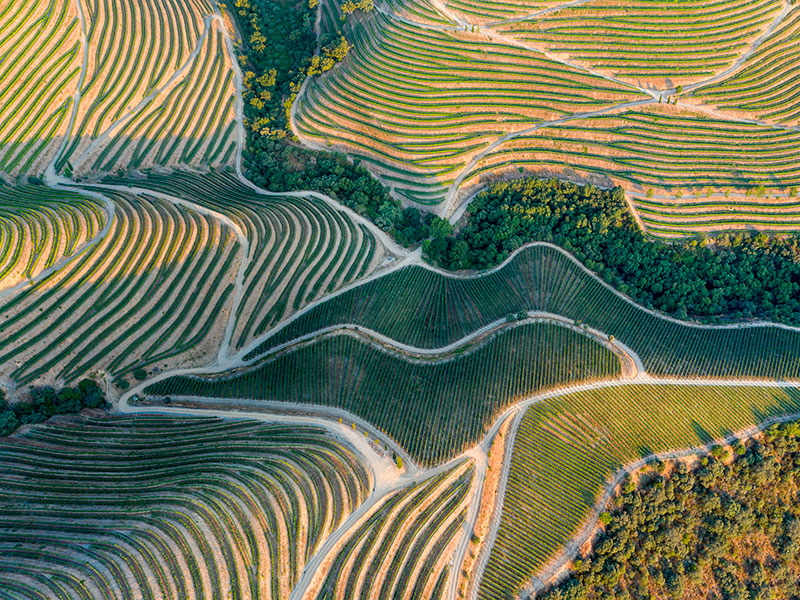
2. Wine Production in the Douro Valley
The Douro Valley, with its undulating landscapes and terraced vineyards, is synonymous with wine production, particularly the world-famous port wine. This majestic region, bathed by the sun and carved by the Douro River, boasts a winemaking tradition that spans centuries.
The Unique Terroir:
At the heart of Douro’s wine excellence is its unique terroir. The valley’s schist-rich soils, combined with its continental climate—hot summers and cold winters—offer an environment where grapes grow with a concentration of flavors, colors, and aromas. This distinct soil composition forces the vine roots to delve deep for hydration, resulting in more robust and flavorful grapes.
The Grapes of Douro:
The Douro Valley is home to a plethora of indigenous grape varieties. Among the white varieties, Gouveio, Viosinho, and Rabigato stand out, while among the reds, Touriga Nacional, Tinta Roriz, and Touriga Franca are celebrated. These grapes form the backbone of the region’s rich and varied wines.
Port Wine – A Global Icon:
Port wine remains the keystone of Douro’s wine legacy. This fortified wine undergoes a unique vinification process where grape spirit is added during fermentation, preserving the grape’s natural sweetness and bolstering its alcohol content. Depending on the aging process – whether in bottles or oak barrels – various styles like Vintage, Tawny, and Ruby ports emerge.
Table Wines and Modern Innovations:
While port wine put Douro on the global map, the valley’s table wines are gaining rapid acclaim. Modern winemaking techniques meld with traditional practices to produce reds and whites of outstanding character. New-age vintners and established wine houses alike are experimenting with blends and aging processes to create wines that resonate with both connoisseurs and new wine enthusiasts.
Sustainability in Winemaking:
In recent years, a surge in sustainable and organic winemaking practices has swept through the valley. Recognizing the need to safeguard the environment and ensure the longevity of their vineyards, many producers are adopting eco-friendly techniques, from reduced water usage to organic pest management.
Conclusion:
The Douro Valley, with its rich history and innovative future, stands as a beacon of winemaking brilliance. From the luscious ports that have graced tables for centuries to the emerging table wines making waves in the wine community, the valley’s wine production story is one of passion, perseverance, and unparalleled flavor.
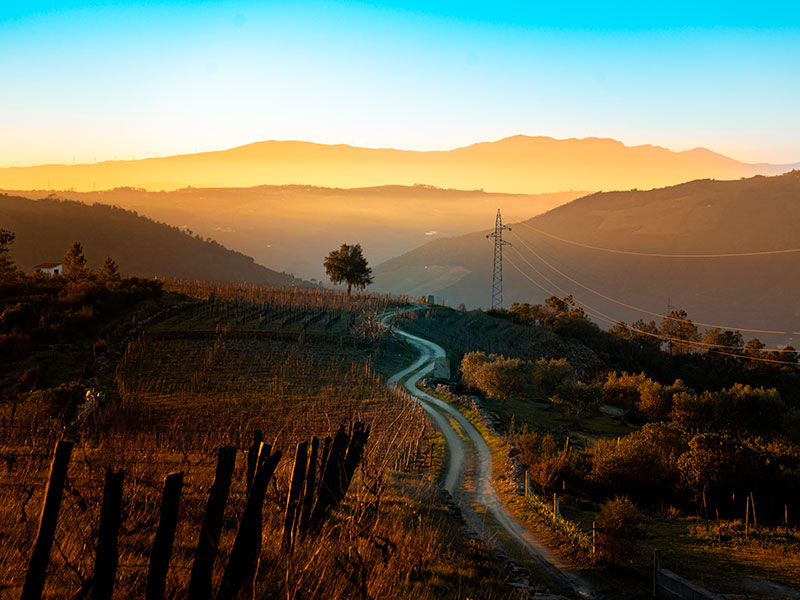
3. Douro Valley: A UNESCO World Heritage Site
The Douro Valley, often hailed as one of the oldest wine regions in the world, is not just renowned for its wine but also for its breathtaking natural beauty and rich cultural heritage. In 2001, UNESCO recognized the region’s outstanding value by designating a significant part of the Douro Valley as a World Heritage Site.
Landscape of Awe-inspiring Beauty:
The Douro Valley paints a picturesque tableau of terraced vineyards, winding rivers, and quaint villages. This harmonious integration of nature with human endeavor, where vineyards contour the rugged landscapes, was one of the primary reasons for its UNESCO recognition. The landscape is a testament to the generations of farmers who shaped the land, turning challenging terrain into fertile vineyards.
Centuries of Viticulture:
UNESCO’s designation acknowledges the region’s long-standing tradition of viticulture. Wine has been produced in the Douro Valley for over 2,000 years, representing a cultural tradition passed down through generations. This ancient winemaking heritage, combined with the unique geographical features of the region, has made the Douro a living museum of the evolution of winemaking.
Architectural and Archaeological Marvels:
Beyond the vineyards, the Douro boasts several historical landmarks, from baroque mansions and wine estates to ancient archaeological sites. These architectural treasures and remnants of early human civilizations provide a window into the valley’s storied past and played a crucial role in its World Heritage designation.
A Symbol of Sustainable Development:
Another significant aspect of the Douro’s UNESCO status is the focus on sustainable development. The recognition has spurred initiatives to promote sustainable tourism and viticulture in the region, ensuring that the valley remains preserved and vibrant for future generations.
Connecting Culture and Nature:
The Douro Valley seamlessly blends cultural achievements with natural beauty. Its UNESCO designation celebrates not just the physical landscape but also the intangible heritage: the songs, dances, festivals, and culinary traditions that have been shaped by the region’s viticultural life.
Conclusion:
Being a UNESCO World Heritage Site is more than just a title for the Douro Valley; it’s an affirmation of its significant contribution to the world’s cultural and natural heritage. As travelers explore its terraced vineyards, historic sites, and vibrant communities, they’re stepping into a living tapestry of human history interwoven with nature.
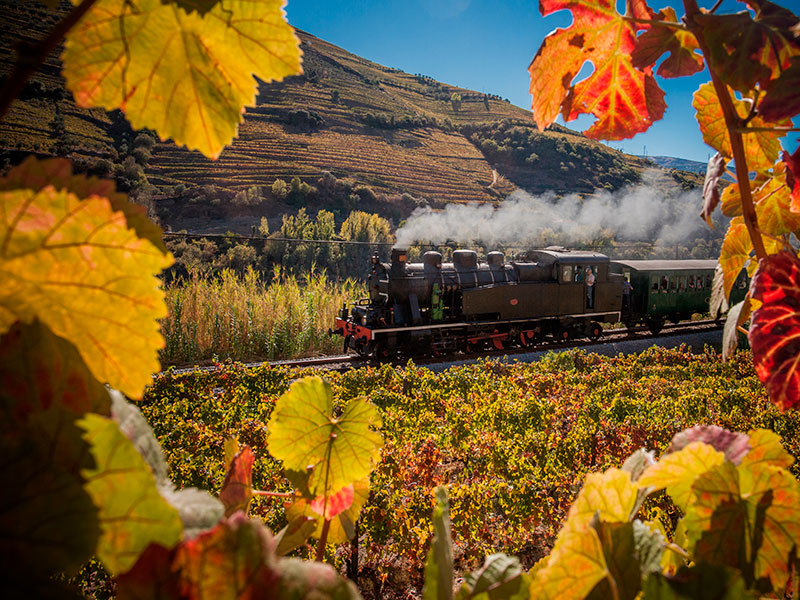
4. Douro Valley: A Symphony of Natural Beauty & Landscape
Nestled in the northernmost parts of Portugal, the Douro Valley is a testament to nature’s grandeur and the indomitable human spirit. Its scenic landscapes, forged over millennia, are a harmonious blend of nature’s raw beauty and human craftsmanship.
The Majestic Douro River:
At the heart of the valley is the majestic Douro River, meandering its way from the Spanish highlands to Porto, where it meets the Atlantic Ocean. This river has sculpted the valley over eons, with its glistening waters reflecting the azure skies and verdant hillsides, creating a serene ambiance that captivates all who visit.
Terraced Vineyards:
One of the most iconic sights of the Douro Valley is its terraced vineyards. These man-made steps, carved painstakingly into the steep mountainsides, transform the landscape into cascading waves of green and gold. Especially during harvest time, these terraces come alive with activity, portraying a timeless scene that has been repeated for centuries.
Mountains and Valleys:
Surrounding the river and vineyards are rugged mountain ranges and deep valleys. These natural barriers not only add to the region’s aesthetic appeal but have also played a pivotal role in shaping its unique microclimate, essential for the cultivation of specific grape varieties.
Flora and Fauna:
The Douro Valley is also home to a diverse array of flora and fauna. From ancient olive groves and almond trees to wildflowers that bloom in spring, the region is a botanist’s paradise. Moreover, the secluded valleys and untouched forests are sanctuaries for many wildlife species, offering birdwatchers and nature enthusiasts ample opportunities for discovery.
Seasonal Splendor:
Every season paints the Douro in a different hue. Spring sprinkles the valley with a vibrant burst of colors as flowers bloom. Summer sees the vineyards in full verdancy, while autumn transforms them into a tapestry of red, orange, and yellow as the grape leaves change color. Winters, though mild, drape a veil of calm over the valley, with the occasional frost adding a touch of magic.
Cultural Imprints on the Landscape:
Dotting this natural paradise are quintas (wine estates), historic villages, and baroque chapels. These structures, some dating back centuries, add a layer of cultural richness to the landscape, showcasing the harmonious coexistence of nature and civilization in the Douro Valley.
Conclusion:
The Douro Valley’s natural beauty and landscape are more than just sights to behold; they are a sensory experience. From the rustling of the vine leaves in the gentle breeze and the aroma of ripe grapes to the distant echoes of traditional Fado songs, the valley invites visitors to immerse themselves in its enchanting allure fully.
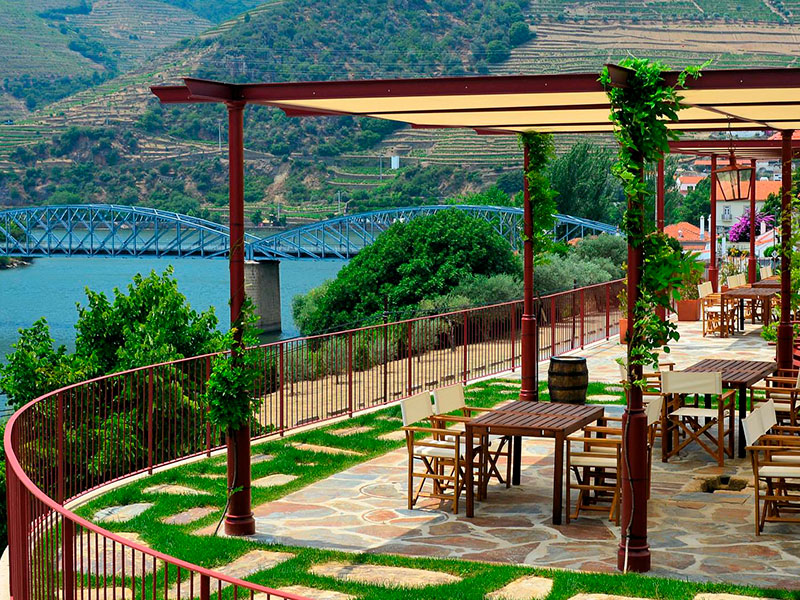
5. Douro Valley: A Mosaic of Cultural Experiences
The Douro Valley is not just a testament to nature’s majesty; it’s also a living museum of Portugal’s rich cultural tapestry. Beyond its picturesque landscapes, the valley offers a plethora of cultural experiences that deeply root visitors in its history, traditions, and daily life.
Quintas – Wine Estates with a Story:
A visit to the Douro Valley is incomplete without stepping into one of its renowned quintas. These wine estates, some of which have histories spanning several centuries, are not just about wine. They encapsulate the region’s architectural, agricultural, and familial legacies. The old manor houses often have tales of their own, echoing the footsteps of the generations that walked their corridors.
Festivals and Celebrations:
Throughout the year, the Douro Valley pulsates with various festivals and celebrations. From the grape harvest festivals, where the ancient tradition of foot treading grapes is still practiced, to religious processions and folk festivals, these events offer an authentic taste of the region’s cultural spirit.
Local Gastronomy:
The Douro’s culinary delights are as much a cultural experience as they are a gastronomic one. Traditional dishes like the hearty ‘Posta Mirandesa’ steak or the rich ‘Francisinha‘ sandwich tell tales of the land and its people. Accompanied by locally produced wines, these meals become an unforgettable cultural immersion.
Traditional Fado Music:
The hauntingly beautiful strains of Fado music, echoing through the vineyards or emanating from local taverns, add another layer to the Douro’s cultural soundscape. Recognized by UNESCO as part of the world’s intangible cultural heritage, Fado in the Douro Valley acquires its own regional nuances, deeply tied to the land and its stories.
Artisan Crafts:
The region is a haven for artisanal crafts. From intricately designed azulejos (ceramic tiles) and hand-loomed rugs to traditional pottery and olive wood crafts, the valley showcases the skill and dedication of its craftsmen. These artifacts, often made with techniques passed down through generations, are a tangible connection to the region’s cultural heritage.
Architectural Wonders:
Dotted across the valley are architectural marvels, ranging from Baroque churches and monasteries to historic bridges and town squares. These structures, often built using local materials, are a reflection of the various cultural influences that have shaped the region over the centuries.
Conclusion:
The Douro Valley is more than just a destination; it’s an experience. A journey here is not just about soaking in the natural beauty, but also about immersing oneself in a cultural narrative that has been woven over millennia. It’s an invitation to become a part of its story, even if only for a short while.

6. Tourism in Douro Valley: A Journey Through Portugal’s Enchanted Valley
When one mentions the Douro Valley, images of undulating vineyards, historic quintas, and serene river cruises instantly come to mind. This picturesque region, which once catered primarily to wine aficionados, has seen a significant surge in its tourist offerings. Today, it caters to a diverse set of travelers, each drawn to the valley for a myriad of reasons.
Wine Tourism:
Undoubtedly the backbone of Douro Valley’s tourism, wine tourism attracts thousands every year. Visitors embark on guided tours of historic wineries, participate in tasting sessions, and even partake in the grape harvest. The journey of the grape from vine to bottle, accentuated by the region’s unique terroir, makes for an unparalleled experience.
River Cruises:
The Douro River, the lifeline of the valley, offers scenic river cruises that traverse the heart of the region. Whether it’s aboard a traditional rabelo boat or a luxury river cruise liner, these journeys offer breathtaking views of terraced vineyards, historic towns, and iconic landmarks.
Adventure Tourism:
For the thrill-seekers, the valley presents opportunities for hiking, cycling, and even kayaking. The varied terrain, encompassing both rugged landscapes and serene paths, caters to both novice and experienced adventurers.
Cultural and Heritage Tourism:
Beyond its natural beauty, the Douro Valley is a treasure trove of cultural gems. From ancient archaeological sites and historic town centers to vibrant festivals and local music, the region offers an immersive dive into Portugal’s rich cultural tapestry.
Accommodation Choices:
Tourism growth in the valley has led to a diverse range of accommodations. From luxury resorts perched atop hills with panoramic views to cozy bed and breakfasts housed in centuries-old estates, there’s a stay to suit every traveler’s preference and budget.
Sustainable Tourism:
Recognizing the fragility of its natural and cultural ecosystems, there’s been a conscious effort in the Douro Valley towards sustainable tourism. Initiatives include eco-friendly accommodations, organic viticulture practices, and community-driven tourism programs that ensure both the environment and local communities benefit.
Connectivity and Accessibility:
Enhanced transport links, including well-maintained roads, efficient rail networks, and proximity to international airports, have made the Douro Valley more accessible than ever. Guided tours, self-drive options, and even hot-air balloon rides offer varied perspectives of this enchanting region.
Conclusion:
The Douro Valley’s tourism landscape has evolved to offer holistic experiences that resonate with diverse travelers. From its wine-centric attractions to its commitment to sustainability, the valley extends an invitation to explore, indulge, and immerse in its many splendors.
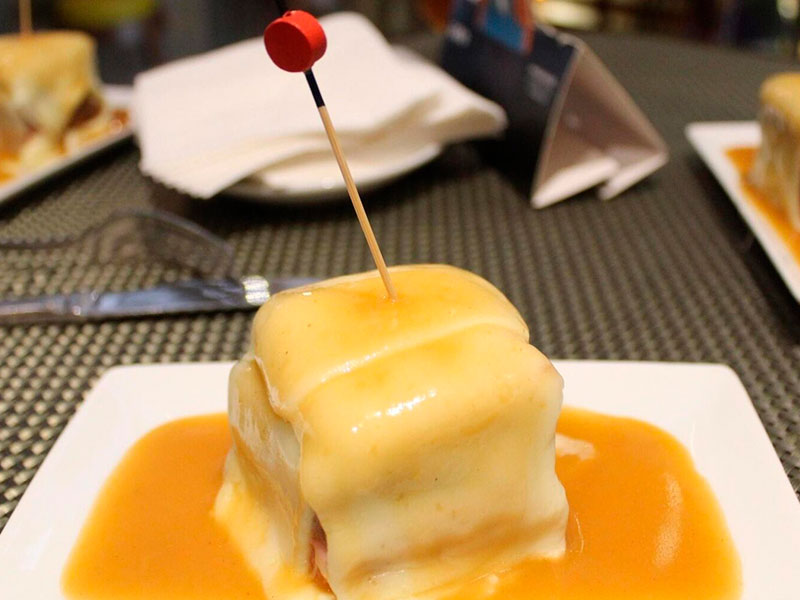
7. Local Gastronomy: A Culinary Voyage Through Douro Valley’s Traditions
Nestled amid the rolling vineyards and meandering riverbanks, the Douro Valley is not just a feast for the eyes, but also a paradise for the palate. The region’s rich culinary heritage is a testament to the land’s bounty, the river’s abundance, and the people’s timeless traditions.
Traditional Dishes:
At the heart of Douro Valley’s culinary landscape are its traditional dishes. A standout is the hearty “Posta à Mirandesa“, a prime cut of veal grilled to perfection. Equally revered is the “Cabrito assado no forno“, a roasted kid dish that’s especially popular during festive seasons.
River’s Delight:
The Douro River generously offers its flavors to the local cuisine. Fish dishes, particularly those made from cod, or “bacalhau“, reign supreme. Whether it’s “Bacalhau à Braga“, fried with onions and peppers, or “Bacalhau com Natas“, where it’s baked with cream, the versatility of this fish is celebrated in countless preparations.
Cheese and Charcuterie:
No gastronomic journey in the Douro Valley is complete without indulging in the region’s cheeses and cured meats. “Queijo da Serra“, a sheep’s milk cheese, is buttery, tangy, and perfectly creamy, while the smoky aromas of the local sausages, like “Alheira“, evoke ancient culinary traditions.
Olives and Olive Oil:
The terraced landscapes of Douro Valley are punctuated by olive groves. The region’s olive oil is of exceptional quality, often characterized by its golden hue and fruity notes. It forms the base for many local dishes, enriching them with its distinct flavor.
Sweets and Pastries:
Douro Valley’s confections are a delightful culmination to any meal. From the almond-laden “Amêndoas Cobertas” to the egg yolk-rich “Papos de Anjo“, these sweets are a testament to the region’s conventual pastry traditions.
Wine Pairings:
It would be a culinary misstep not to mention the region’s wines when discussing its gastronomy. The robust reds, crisp whites, and iconic Port wines of the Douro Valley elevate the dining experience, harmoniously complementing the local dishes.
Conclusion:
Douro Valley’s local gastronomy is a rich tapestry of flavors, woven together by history, geography, and tradition. To dine here is to partake in a culinary narrative that spans centuries, making every bite a journey through time and taste.
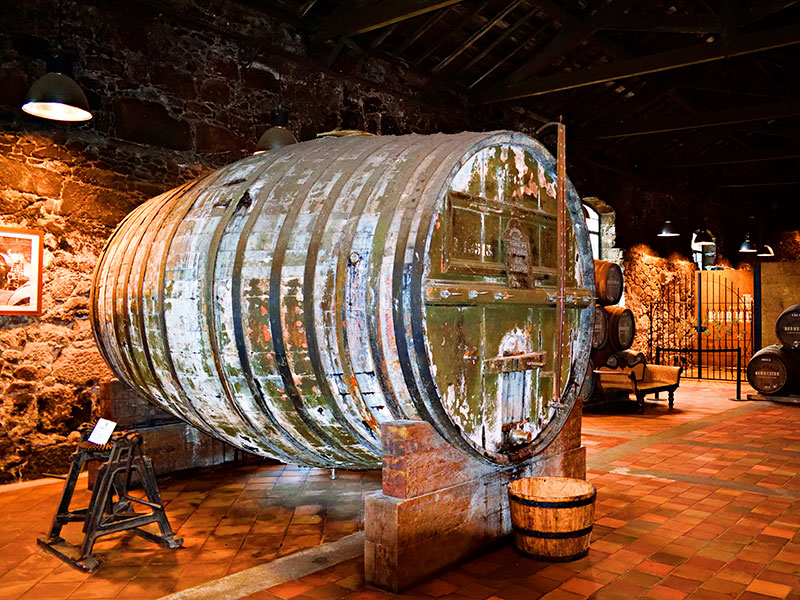
8. Economic Impact: Douro Valley’s Driving Forces
The Douro Valley, with its terraced vineyards climbing steeply along the riverbanks, is more than just a scenic wonder. It’s an economic powerhouse, vital to the Portuguese economy and a primary source of livelihood for thousands.
Wine Exports:
Wine production, especially the famed Port wine, has long been a cornerstone of the region’s economy. Exported globally, these wines have built a reputation of quality and distinction. They contribute significantly to Portugal’s export revenues, with the Douro Valley acting as the epicenter of this trade.
Tourism & Hospitality:
In recent years, the Douro Valley has emerged as a top-tier tourist destination. The influx of international and local tourists has led to the growth of hotels, inns, and boutique guesthouses. River cruises, wine tasting tours, and cultural excursions generate substantial income for the local economy.
Agriculture Beyond Vines:
While vineyards dominate the landscape, the Douro Valley’s agricultural prowess extends beyond grapes. Olive groves, almond orchards, and traditional farming contribute to the local and national economy, offering diversity in produce and employment.
Local Crafts & Artisanal Products:
The valley’s artisans, producing everything from handcrafted ceramics to woven goods, inject the economy with authentic, high-quality products that are sought after both locally and internationally.
Infrastructure Development:
The economic growth stemming from wine exports and tourism has ushered in investments in local infrastructure. Improved roads, better public transport, and enhanced amenities not only serve tourists but elevate the quality of life for local residents.
Job Creation & Skills Training:
The diverse economic activities in the valley, from viticulture to hospitality, create jobs and encourage skill development. Institutions offer specialized training in viticulture and enology, ensuring a skilled workforce that can uphold the region’s proud wine-making legacy.
Environmental Initiatives:
With the recognition of the delicate balance between commerce and conservation, there’s an economic push towards sustainable practices. Investments in sustainable viticulture, eco-friendly tourism, and conservation projects ensure the valley’s long-term economic and environmental viability.
Conclusion:
The Douro Valley’s economic impact is profound, extending well beyond its borders. A harmonious blend of tradition and innovation, the region showcases how cultural heritage and economic growth can go hand in hand, creating a prosperous future built on the foundations of its rich past.
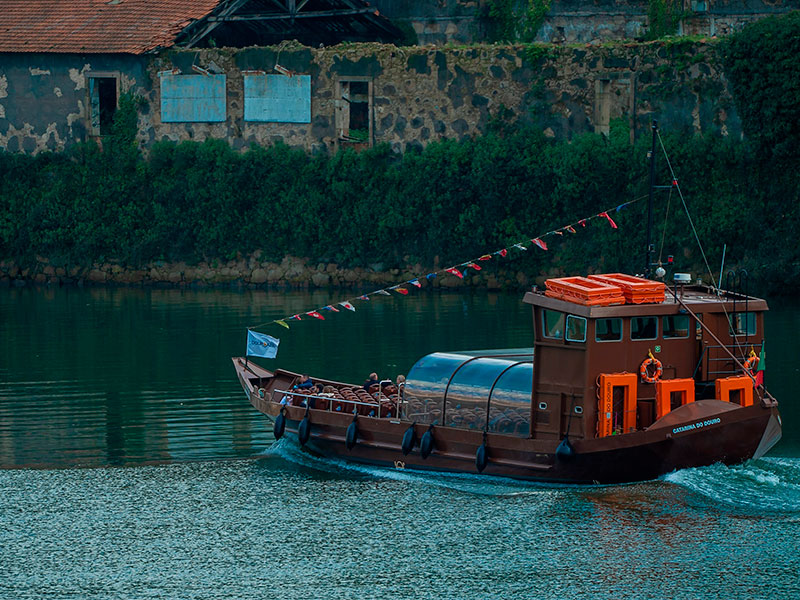
9. Environmental and Sustainability Concerns: A Delicate Balance in Douro Valley
The Douro Valley, famed for its wine and stunning landscapes, also stands at a critical crossroads of environmental and sustainability challenges. As the region continues to thrive economically, there’s an increasing responsibility to ensure that growth doesn’t come at the environment’s expense.
Soil Erosion and Land Degradation:
The terraced vineyards, while aesthetically pleasing and functional, are susceptible to soil erosion. This degradation, especially during heavy rains, can lead to loss of fertile topsoil and diminished productivity. Maintaining these terraces and implementing soil conservation techniques becomes paramount.
Water Management:
The Douro River is the lifeblood of the region. As viticulture intensifies, there’s a growing need to ensure efficient water use. Over-extraction and improper irrigation can strain the river’s resources, affecting not just agriculture but also the delicate riverine ecosystems.
Pesticides and Chemicals:
Modern vineyard practices sometimes rely on chemical pesticides and fertilizers. These can seep into the groundwater or be washed into the river, affecting water quality and aquatic life. There’s a growing movement towards organic and biodynamic farming to mitigate these impacts.
Climate Change Vulnerability:
The Douro Valley’s climate plays a pivotal role in its wine production. However, changing weather patterns, rising temperatures, and unpredictable rainfall are causing concerns for the long-term viability of wine production in its current form.
Biodiversity Loss:
Increased agricultural activity and tourism, if unchecked, can lead to habitat disruption. This impacts local flora and fauna, leading to a decrease in biodiversity. Sustainable tourism practices and conservation initiatives are crucial to counter this.
Waste Management:
With tourism booming, managing waste, especially non-biodegradable waste, becomes critical. From wine production by-products to tourist-generated waste, comprehensive waste management and recycling initiatives need to be prioritized.
Sustainable Tourism Initiatives:
The onus is on tourism operators to ensure that the footprints left behind are green. This includes promoting eco-friendly accommodations, reducing water and energy consumption, and educating visitors on sustainable practices.
Green Viticulture:
There’s a concerted effort among many wine producers to adopt greener practices. This includes using renewable energy, reducing carbon footprints, and adopting organic farming practices.
Conclusion:
The Douro Valley, while facing these environmental challenges, is also a beacon of hope. Many local businesses, farmers, and stakeholders are actively seeking and implementing solutions. Collaborative efforts, coupled with government policies and community engagement, aim to ensure the Douro Valley remains a pristine and productive region for generations to come.
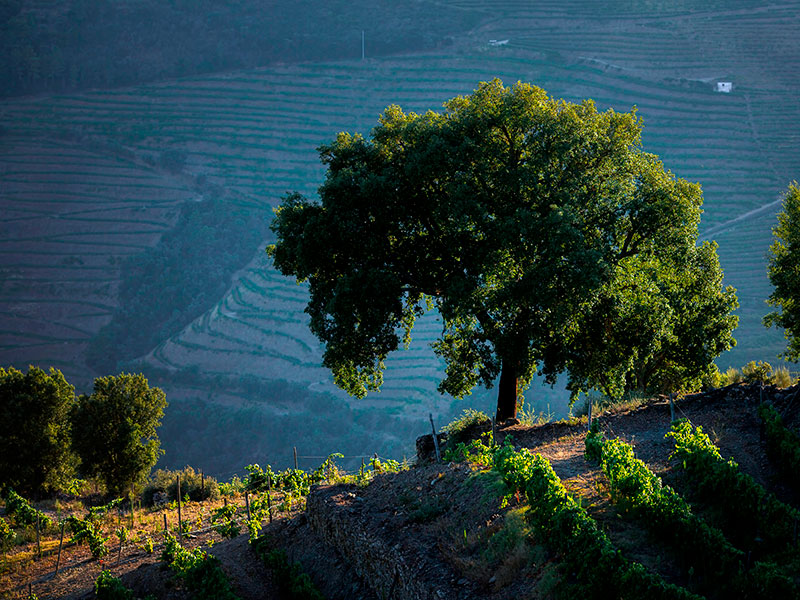
10. Future of Douro Valley: Charting a Sustainable and Flourishing Path Forward
The Douro Valley, with its undulating terraces, rich history, and famed wine production, is undoubtedly one of Portugal’s crown jewels. As the world evolves and faces myriad challenges, so does this splendid region. The future of Douro Valley is a tapestry woven with optimism, adaptability, and a deep sense of responsibility.
Adapting to Climate Change:
The changing global climate is a looming shadow over viticulture. The Douro Valley is no exception. Forward-thinking vintners are already experimenting with grape varieties that can better withstand temperature fluctuations and irregular rainfall, ensuring the continuation of the region’s wine legacy.
Embracing Technology:
The infusion of technology into agriculture and viticulture offers a ray of hope. Drones for terrain mapping, precision irrigation systems, and digital platforms connecting farmers directly with consumers are some innovations shaping the valley’s future.
Sustainable Tourism:
The rise of eco-conscious travelers is steering the tourism industry towards sustainability. The Douro Valley is poised to lead in this, with eco-lodges, green tour operators, and conservation-focused experiences catering to the discerning traveler.
Cultural Revival:
Preserving the unique cultural tapestry of the Douro Valley is paramount. Efforts are underway to revive and promote indigenous art forms, traditional festivals, and local crafts, ensuring that the soul of the region remains vibrant.
Economic Diversification:
While wine will always be central to the Douro Valley’s economy, diversification is on the horizon. Olive oil production, artisanal cheese-making, and luxury retreats are avenues being explored, providing stability and resilience to the local economy.
Conservation Initiatives:
The local community, government bodies, and private enterprises are joining hands in conservation efforts. Reforestation, river clean-up drives, and wildlife protection programs are ensuring the valley remains pristine.
Inclusive Growth:
Ensuring the benefits of tourism and trade are equitably distributed is crucial. Community-based tourism and support for small-scale producers are initiatives ensuring the local populace thrives alongside the region.
Educational Endeavors:
Knowledge is the key to the future. Agricultural schools focusing on sustainable farming, workshops on green practices, and educational tours for visitors are some endeavors aiming to instill a sense of responsibility and knowledge.
Conclusion:
The Douro Valley stands at an exciting crossroad. By intertwining its rich legacy with modern sensibilities and sustainable practices, it is set to embark on a journey that not only preserves its essence but also ensures it remains a beacon of prosperity, sustainability, and cultural richness for centuries to come.



